Dr Philip Bezanson UMASS Amherst Music Department Head
Dr. Philip Bezanson UMASS Amherst Music Department Head 1964-1973
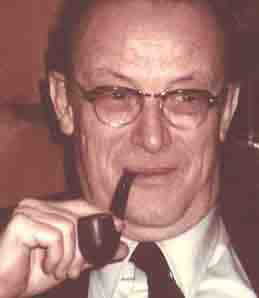
Dr. Philip Bezanson, circa 1971
Dr. Philip Bezanson (1916-1975) and Wiki was appointed the Head of the UMASS-Amherst Music Department in 1964.
The Author of this essay, Bob Amato was the first recipient of a BA in Trumpet Performance to ever be awarded at the University of Massachusetts.
Bob attended UMASS – Amherst continuously for five
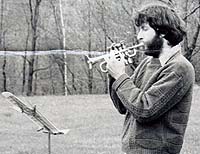
Essay Author, Bob Amato practicing Selmer 4 piston valve piccolo trumpet outdoors in the fall of 1970.
years from 1967-1972 where Dr. Bezanson was the Head of the Music Department. Bob was also a Music Education Major and successfully completed all Music
Ed related courses with the exception of a one semester student teaching assignment that prevented from earning the additional BA in Music Education degree.
While doing research in preparation for this essay about Dr. Bezanson, Bob found nothing but ‘flowery praise’ for Dr. Bezanson’s achievements as a composer, educator, as well as an administrator.
However, Bob’s recollection of Dr. Bezanson is that of an administrator that stayed ‘locked behind closed doors’. On the rare occasion that Dr. Bezanson actually left his ‘locked closet’, Bob has no recollection of Dr. Bezanson ever speaking a single time to any students or even group of students on a remotely casual basis. At best, Dr. Bezanson would simply ‘nod his head’ if a music student at UMASS would say ‘Hello’ to him. And, on the rare occasion that Dr. Bezanson would be seen publicly on the UMASS campus, he wore a somber expression on his face and would rarely be seen walking along with any other faculty member and certainly never walking along side any student.
By the end of the Spring Semester of 1972, the entire musical focus of the UMASS-Amherst music department was devoted to the study and understanding of music whose origins were of European Classical in nature. And, the vast majority of the music student body were being trained to be capable public school Music teachers whose complete focus was European inspired Classical music. By the end of the Spring Semester of 1972 there
was never any hint of ACTUAL MOVEMENT towards the development of a Jazz or Popular music oriented curriculum.
Between 1967 and 1972, the University of Indiana at Bloomington was light years ahead of UMASS-Amherst in terms of available Music curriculum. The University of Indiana had a classical music studies program that was every bit as advanced as the University of Michigan or any of the big name U.S. classical music oriented training institutions such as Julliard, New England Conservatory, Oberlin, Eastman School of Music, Peabody, and Curtis School of Music. Plus, the University of Indiana had a Jazz and POP music studies program that would easily rival Berklee School of Music in Boston and the renowned North Texas State University.
Based on student enrollment in 1967-1971 UMASS-Amherst was the largest State University in the United States East of the Mississippi River. However, in the 1967-1972 time frame the Music Departments that represented the State Universities in the Mid-Western States in particular offered Music Departments that were considerably more advanced than UMASS-Amherst. Indiana and Michigan offered the most advanced Music Departments State University Departments in the United States. From a Classical music perspective, Iowa was highly regarded. However, Ohio, Nebraska, Kansas, Wisconsin, Illinois, Minnesota, Missouri, and Oklahoma all offered outstanding Classically oriented State University Music Departments whose curriculums were considerably more advanced than UMASS-Amherst in 1967. In the North East, the best State University Music Departments were in New York (SUNY) and Pennsylvania. In the South, Tennessee the Music Department had an excellent reputation. In the Mountain States, Colorado and New Mexico had an excellent reputation. And, on the West Coast, California had an excellent reputation, although Washington was considered quite good as well.
Up to 1972, UMASS had an excellent reputation throughout the World in the fields of Education, Science (including Pre-Med), Sociology, Psychology, Liberal Arts, Mathematics, Engineering, and the long established Stockbridge School of Agricultural which included Veterinary Science, Forestry, and Wild Life Management. Up to 1972, UMASS-Amherst did not even offer a Dance program of any consequence whatsoever. Up to 1972, the Classically oriented Music Department was little more than an ‘after thought’ compared to the other highly regarded fields of advanced study that UMASS offered that were considered ‘World Class’. The overwhelming focus of the UMASS-Amherst Music Department was Music Education of a Classic Nature. The UMASS-Amherst Music Department was geared to do an excellent job preparing music education majors to gain employment as competently trained music educators in the public school system throughout the United States. Up to 1972, the UMASS-Amherst Music Department produced very, very few ‘Instrumental Music Major’ graduates who received either a BA or MMA in instrumental music performance. The Author of this Essay, Bob Amato was one of the very few that received a BA in instrumental (trumpet) Music Performance. (2nd in School History – the first Doug Purcell). Bob does not recall any UMASS Music Department student up to 1972 ever receiving an MMA in instrumental music performance.
However, up to 1972, the UMASS-Amherst classical oriented Music Department was substantially more advanced than those that were offered at State Universities in Maine, Vermont, New Hampshire, Rhode Island, and Connecticut. The Connecticut State University was considered second to UMASS-Amherst in terms of Music Department curriculum availability.
In fact, up to 1972 the four most important Music Departments in all of New England were located in Boston. From a classical music perspective, these included New England Conservatory, Boston University, and Boston Conservatory. The faculties of these three schools were essentially interchangeable. The vast majority of the ‘instrumental’ oriented faculty were members of the Boston Symphony Orchestra. And, from a Jazz, POP, and Commercial Music perspective, the outstanding Berklee School of Music which has now merged with Boston Conservatory.
The 1960’s were exceedingly turbulent both politically as well as culturally throughout the Western World and in the United States in particular. Plus, the post WWII baby boomer generation embraced an appearance, manner of dress, and general ‘attitude’ to life in general that was frequently foreign to people that were of Dr. Bezanan’s generation.
To Dr. Bezanson’s credit, Dr. Bezanson recruited a great group of outstanding classically oriented music educators. Although none of the UMASS Music Faculty that Bob interacted

Model impersonating the 1970 appearance of Bob’s Symphony Band bandmate, John Perko’s frequently stoned, but very lovely girlfriend, Bianca.
with between the 1967-1972 ever remotely ’embraced’ the ‘Hippie-Dippy’ lifestyle and appearance of much of the UMASS student body, the vast majority of the Music Faculty seemed to embrace the ambiance of that time frame and really enjoyed
interacting with their students.
Bob has always believed that Dr. Bezanson was actually horrified by the Baby Boomer led culture that was beginning to unfold around him by the in the Mid-1960’s.
Four noteworthy examples come to Bob’s mind:
The first example occurred in 1970. The UMASS music faculty added a terrific, classically trained percussionist, Dr. Peter Tanner.
Dr. Tanner had impeccable training from Eastman School of Music (B.M.1958, M.M.1959) and Catholic University (Ph.D.1967).
Dr. Tanner was also a very capable symphony orchestra performer as well as solo recitalist on the Marimba in particular. Dr. Tanner was a marvelous instructor with an excellent sense of humor.
Not only did the music major percussion students really like Dr. Peter Tanner, the rest of the music department student body did as well. Not long after joining the UMASS music faculty, Dr. Tanner established the outstanding UMASS Percussion Ensemble.
Early on, Dr. Tanner also performed with the Percussion Ensemble as well. At one of the first, if not the very first public UMASS recital, the Percussion Ensemble performed a particularly note worthy composition that concluded the program which was one of Dr. Tanner’s own arrangements. This particular arrangement was particularly interesting to listen to, and unexpectedly transitioned into a very clever, and quite humorous rendition of the famous movie theme song from the 1966 Clint Eastwood, Spaghetti Western, The Good, the Bad and the Ugly (music theme).
And, the skillful percussion based arrangement that Dr. Tanner scored was based on the Hugo Montengro Version – of the film theme song. At the end of the arrangement, the percussion instruments stopped playing completely. The last two bars (8 beats) were a tape recording that Dr. Tanner spliced together of the famous movie theme Ennio whistle (named after the film score composer, Ennio Morricone, and whistled by Alessandro Alessandroni…“OOIE OOIE OOOOHH – OOH OH WAH” – “OOIE OOIE OOOOHH – OOH OH WEE” .
Someone backstage in the recital hall started the recording right on cue which was piped through the recital hall public address system. The harmonic structure of this simple 8 beat music phrase ended on a note that gave the listener the impression that the arrangement ended by asking the listener a ‘question???’ which provided the illusion that the arrangement had not completely ended.
The recital hall for this marvelous UMASS Percussion Ensemble performance, was packed with students as well as many of the faculty members which included Dr. Bezanson in attendance.
After a brief pause after the final unexpected ending, the the program drew thunderous applause and a standing ovation from all but one person. GUESS WHO?? Dr. Bezanson did not stand nor applaud. Before the enormous ovation ended, Dr. Bezanson walked out of the recital!
The week of that performance, Bob had a group “Applied Percussion Education Class” that Dr. Tanner taught. At the conclusion of this class, Bob told Dr. Tanner how much he enjoy the Percussion Ensemble recital and the Peter Tanner arrangement that segued into “The Good, The Bad, and The Ugly’ film theme. Dr. Tanner told Bob that Dr. Bezanson gave Dr. Tanner a tongue lashing for performing a recital that included even a small measure of popular culture.
The second example of Dr. Bezanson’s attitude toward non-European classical music occured in 1971.
As Bob has already indicated, UMASS did not have any type of jazz oriented music curriculum nor even have a jazz oriented ‘Stage Band or Big Band‘. A modern jazz oriented stage band that is divided into ‘4 sections’ typically consists of 4 and sometimes 5 trumpets. 3 to 5 trombones including a bass trombone when available. 5 Saxes – 2 Alto’s, 2 Tenors, and Baritone. 3 Rhythm including Piano, Bass and drums. Sometimes a guitar is added.
A music education major by the name of Dennis Wrenn was in the same class as Bob. Also see Obituary (RIP 2009) (PLEASE NOTE- The author of this Essay, Bob Amato was deeply saddened to learn that Dennis had passed away in 2009 while the Author was researching the composition this essay in 2019. The Author intended to track down and contact Dennis after the publication of this Essay. The Author, Bob had the highest regard for the immensely talented Dennis Wrenn and knew Dennis quite well throughout all of Dennis’s entire UMASS student career. Dennis was a highly respected member of the Music Department student body)
Dennis Wrenn was a piano player whose skills classically and jazz were not particularly advanced. Dennis was more of a ‘cocktail’ lounge piano player. However, Dennis possessed the best ‘band conductor’ conducting technique skills in Bob’s music class. And, Dennis was also the best in Bob’s class when it came to all aspects of Music Theory and Composition.
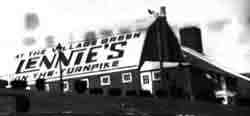
Renowned Lennie’s on the Turnpike renowned Jazz Club located outside of Boston in the 1960’s
Dennis was a Straight A student in all music courses. And, on occasion, Dennis tutored Bob privately on certain more advanced elements of Music Theory that were taught by Professor Charles Fussell that Bob had difficulty grasping. Furthermore, Dennis has a keen interest in Big Band Jazz, and arranging both Jazz and Popular music. And beginning in the late 1960’s, Dennis introduced to Bob the famed ‘Lennie’s on the Turnpike’ Jazz night club in Boston which was in
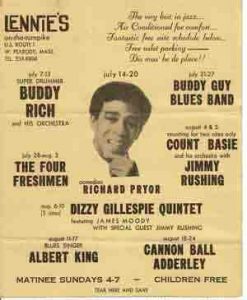
Late Lennie’s on the Turnpike Playbill featuring Buddy Rich and Count Basie that Bob attended with Dennis Wrenn.
Dennis’s home area. Bob accompanied Dennis to multiple concerts at “Lennie’s”. Late 1960’s performances that featured the Buddy Rich Big Band as well as the Count Basie Orchestra come to mind. Dennis was a huge fan of Buddy Rich’s drumming capabilities and Buddy’s band arrangements in particular. Dennis also was seriously considering obtaining a Masters Degree in Jazz Studies at Berklee School of Music in Boston. Dennis had friends who attended Berklee and Dennis was able to obtain ‘pirated’, reproduced copies of Big Band arrangements from the Berklee School Music Library provided by Dennis’s Berklee School student contacts.
By 1971, Bob’s interest in playing big band jazz and popular music in general had waned considerably. During the summer months, Bob was still performing occasionally as lead trumpet with John Talarico’s Berkshire Jazz Orchestra as well as summer stock musical theatre performances near his parents home in Williamstown, Massachusetts. However, by 1971, Bob was now preparing himself for a career performing classical music.
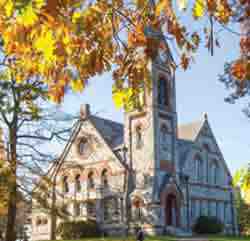
The beautiful Old Chapel was the epicenter of all UMASS Music Department student instrumental music activities from 1967-1972. The author spent many hours daily – 7 days a week either rehearsing or practicing within this fine building.
However, Dennis Wrenn’s enthusiasm prevailed, and Bob helped Dennis assemble the needed personnel to start a UMASS Stage Band that was to practice one or two evenings a week at the UMASS Band practice facility which was in the large band practice room at the Old Chapel. The student organized and non-University supported rehearsals were to begin at around 8 PM and last for no more than 2 hours. This was strictly a ‘rehearsal, just for kicks’ all student band operation. It was unlikely that the band would ever perform publicly in any type of formal concert presentation.
Bob was to play lead trumpet. Some of the musicians that Bob rounded up were as follows: Two of the other trumpet players were the very capable John Perko who helped out with the playing of the frequently difficult lead trumpet parts, and Dick Olmstead. Bob cannot remember the name of the 4th trumpet player. The trombone section included Tim Atherton, Andy Malloy, Bill Hastings and possibly graduate music education major, Doug Weeks. The sax section included Charlie Vatalaro and Tim Moran (also) on Tenor. And, a fellow named John on lead Alto. All three of these sax players were talented jazz players. Vatalaro and John the Alto player were U.S. Military Band veterans who went back to Music School under the G.I. Bill. Dennis Wrenn was the leader, contributed original compositions, his own skillful arrangements of popular tunes, and played Piano. Bob cannot remember the name of the bass player. A particularly notable musician was the drummer,
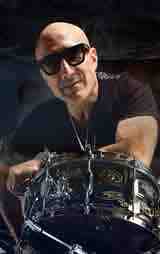
Renowned Rock Drummer, Kenny Aranoff.
Kenny Aranoff. Kenny was from Bob’s home Berkshire County and was a Freshman and was likely the youngest member of the band. Kenny was an enormously talented, hard working percussionist who had great interest in classical, jazz, and pop musical performance. Kenny left UMASS after he completed his Freshman year. Kenny went on to get a degree in music from the University of Indiana in Bloomington. Ultimately, Kenny developed into one of the world’s most in demand ‘Rock n Roll’ drummers and since the mid-1970’s has had a remarkable career as the ‘first call drummer’ on the entire Planet when it comes to performing and recording popular music.
Being a huge Buddy Rich fan, Dennis selected a number of Buddy Rich arrangements for the ‘just for kicks’ rehearsal band to pursue. Buddy Rich arrangements of Mercy, Mercy, Big Swing Face, Love for Sale, Sister Sadie, New Blues, Channel One Suite, West Side Story, and The Beat Goes On come to mind. The rehearsal book also contained some Maynard Ferguson arrangements from the late 50’s to early 60’s that were quite difficult. Some Stan Kenton and Woody Herman arrangements were in the mix that dated from the 1960’s that were also quite challenging.
The Bill Reddie arranged charts, ‘Channel One Suite’ and West Side Story were the most challenging of this very challenging modest big band arrangement library that Dennis put together. From the mid 60’s to early 70’s the most notable lead trumpet players that Buddy Rich utilized were Bobby Shew and the terrific Al Porcino. Bob was attempting to play charts that were way over his head and skill set at this time and perhaps anytime during the course of Bob’s musical career.
Channel One Suite and West Side Story were arranged by Bill Reddie to feature extended drum solo parts that featured the masterful Buddy Rich. Rehearsal Band drummer, Kenny Aronoff did a very admirable job playing the exceedingly difficult Buddy Rich oriented drum parts.
UMASS trombone instructor, and Assistant Band Director Professor Larry Weed, had his office teaching studio down the hall from the band rehearsal room in the Old Chapel. Professor Weed who was single at that time worked very long hours and frequently stayed in his Office well into the evening hours. On occasion, Professor Weed would drop in and listen to the band rehearse. Professor Weed was quite knowledgeable about the
performance of Big Band Jazz Music. And, Bob heard Professor Weed tell Dennis Wrenn that he both enjoyed and appreciated Dennis’s efforts in putting together this type of rehearsal student band. Professor Weed was the only music faculty that ever listened in on the rehearsal band that Bob was aware of.
Getting back to Dr. Bezanson…..
Early the following that followed the third or fourth student Stage Band rehearsal, Dr. Bezanson directed someone to post a message at various locations within the Old Chapel rehearsal building as well as on the large outside front entrance door music that the Dennis Wrenn’s ‘just for kicks – rehearsal stage band’ was forever forbidden to use the Old Chapel band rehearsal hall ever again. The reason given was something like this>>>
“The Old Chapel rehearsal facility is for performing music of a ‘Classic Oriented Nature ONLY’…And, future violators of this directive would face ‘administrative disciplinary action’. The message was hand signed ‘Dr. Philip Bezanson’.
When the band members collectively showed up at the next scheduled band rehearsal and saw the Dr. Bezanson ‘CEASE AND DESIST NO TRESPASSING’ notice the members of the band were all dumb founded and ‘couldn’t believe it! Rehearsal Band Leader, Dennis Wrenn in particular was all upset and leveled some unprintable descriptive vocabulary towards Dr. Bezanson’s name.
Initially, Bob was convinced that the ‘CEASE AND DESIST – NO TRESPASSING’ notice was a practical joke that either Oboe instructor, Dr. David Charles “Chick” Lehr, or Professor “Wally” Chesnut’s trumpet teaching Assistant, Jerry Mirliani
had concocted and posted. (both known pranksters around the Music Department at UMASS from 1967-1972)
Bob and Dennis went upstairs together to the band rehearsal room area, and found Professor Larry Weed in his office working late as usual. Professor Weed saw the ‘CEASE AND DESIST – NO TRESPASSING’ notice and convinced Bob and Dennis that this notice was not a practical joke and was the product of Dr. Bezanson himself. Other than shrugging his shoulders, Professor Weed had no explanation. But, Professor Weed suggested that the ensemble return after a minimum of two weeks with the expectation that whatever Dr. Bezanson was concerned about would blow over.
This proved to be the case, and the band continued to rehearse without further Dr. Bezanson’s negative intervention.
Dr. Fred Tillis is added to the UMASS Music Department Faculty in 1970
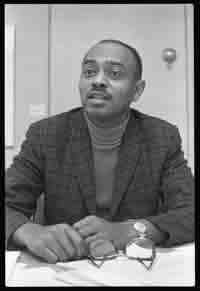
Dr. Fred Tillis circa 1970
The appointment of Dr. Fred Tillis to the UMASS Music Department Faculty in 1970 is particularly noteworthy. And, Bob has always believed that the courses that Professor Bezanson directed to Dr. Tillis to teach are an example of how Dr. Bezanson would suppress any musical expression that was outside of the European Classical Music mold.
When Bob arrived at UMASS-Amherst in September 1967, the combined Undergraduate and Graduate student body numbered well over 30,000. This was caused by the rapid expansion of what became known as the ‘Baby Boom Generation’ and exploding birth rate in the United States that immediately followed the end of World War II in 1945.
The massive number of student admissions to UMASS caused the University to embark on massive construction projects to build new dormitory high rise housing facilities, new cafeterias, and new state of the art classroom facilities to handle the massive influx of ‘Baby Boom Generation’ age students.
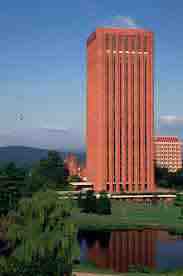
W. E. B. Du Bois Library – UMASS-Amherst – Construction began in 1969 on the 28 story, 320,000 square foot facility that opened in 1973.
The massive building boom included the extraordinary 28 story W. E. B. Du Bois Library which became and still is the 2nd tallest library in the World, and the tallest academic research library in the world. The need for highly qualified instructors in all educational disciplines were also needed and a considerable number of new UMASS faculty were added beginning in 1964 and grew into 1967 even further.
In 1967, the racial makeup of UMASS was 99.9% white. And, the racial makeup of the UMASS faculty was probably 99.8% white. However, by 1970, the number of UMASS students and faculty that included a racial profile that was notably African American began to increase to a very, very, small degree.
Between 1967 and 1970, by far the most notable African American student was Basketball Super Star and Pro Hall of Famer, Julius “Dr. J”
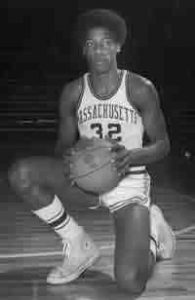
NBA Hall of Fame basketball player, Julius “Dr. J” Irving at UMASS-Amherst 1968-1970.
Irving enrolled at UMASS Amherst in 1968. Dr. J was the sole African American member and resident of a very ‘boisterous and rowdy’ UMASS-Amherst Fraternity House that was located across the street from the central area of the sprawling UMASS-Amherst Campus.
On quite a few occasions between 1967 and 1969, this Fraternity hired the “Forever Fabulous Incorporated Soul Band’ – a very popular 12 Piece Soul Review band that Bob performed with to provide entertainment at this Frat’s particularly ‘Wild and Crazy’ alcohol fueled parties.
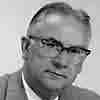
Oswald Tippo – UMASS-Amherst Chancellor 1970
For one year beginning in 1970, former Provost and Botanist, Oswald Tippo became the first Chancellor to Head the UMASS-Amherst Campus. Under Tippo’s direction, the first classes Asian and African-American Studies were begun.
From 1971-1979, UMASS-Amherst started to become markedly more
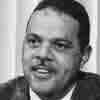
Randolph “Bill” Bromery – UMASS-Amherst Chancellor 1971-1979.
culturally diverse with the appointment of Randolf “Bill’ Bromery as Chancellor. Bill Bromery was the first person of African American heritage to administer this position.
According to http://scua.library.umass.edu/umarmot/bezanson-philip/ and further confirmed http://scua.library.umass.edu/umarmot/tillis-frederick-1930/ , Dr. Bezanson recruited Dr. Fred Tillis to become a member of the UMASS Music Department Faculty in 1970. Dr. Tillis was a former, highly regarded Student of Dr. Bezanson at the University of Iowa where Dr. Tillis earned an MMA in 1952 and a PHD later on at Iowa State as well. However, it is interesting to note that https://en.wikipedia.org/wiki/Randolph_Bromery indicates that Bill Bromeroy was responsible for recruiting Dr. Fred Tillis when Dr. Bromery was not serving as UMASS Chancellor until 1971. Dr. Tillis became a UMASS Music Department Faculty member in 1970.
Although it was rumored within the UMASS music student body that Dr. Fred Tillis was hired to establish some sort of ‘formal for college credit’ Jazz Studies curriculum at UMASS Amherst beginning in 1970, that proved not to be the case. Between 1970 to 1972, Dr. Fred Tillis only taught ‘Classical’ music composition and theory in the strictest European tradition. In fact, in the fall of 1970, the Author of this Essay, Bob Amato asked Dr. Tillis if Dr. Tillis intended to establish a formal Jazz Studies program within the UMASS Music Department. Dr. Tillis simply smiled and told Bob, “Well that might be possible!” Other music major classmate’s of Bob’s who actually took some of Dr. Tillis’s ‘classical music’ courses asked Dr. Tillis the same question. The response was always the
same. “Well that might be possible!”
Did Dr. Bezanson suppress the development of a formal Jazz Studies curriculum that Dr. Tillis was more than qualified to manage?
According to…http://scua.library.umass.edu/umarmot/bezanson-philip/ , Dr. Bezanson became Head of the UMASS-Amherst Music Department in 1964 which he held until 1973 when Dr. Bezanson returned to full-time teaching at UMASS-Amherst for the last two years of his life.
Was it a coincidence that Dr. Fred Tillis’s considerable talents really began to blossom over many more decades after Dr. Bezanson was no longer the Head of the UMASS-Amherst Music Department?
The Author of this essay, Bob continued to reside in the greater Amherst, Massachusetts area until Mid-March, 1973. At that time, Bob left the United States to perform with the Cyprus National Chamber Orchestra as Principal Trumpet as well as a featured soloist. After about five months, due to a truncated Orchestra season caused by Civil Strife in Cyprus, Bob returned to the UMASS-Amherst area and resided in an apartment located on Main Street over an aromatic Pizza Parlor in North Hampton, Massachusetts. Bob was very surprised that the UMASS – Amherst Music Department had launched an ambitious Jazz Studies Program. This newly established Jazz Studies Curriculum revolved around Dr. Fred Tillis. And, newly appointment UMASS Newly Faculty Members:
Max Roach – Renowned Jazz Drummer
Archie Shepp – avant-garde Jazz Tenor Sax Player
Reggie Workman – avant-garde jazz and hard bop Double Bass
Until Bob began to recently perform research in 2019 on this essay about what he remembered about Dr. Bezanson during the 1967-1972 period, did Bob learn that Dr. Bezanson’s UMASS Music Department Head ended in 1973 and he passed away in 1975.
By way of almost 50 years hind sight, It appears to Bob, that UMASS Chancellor “Bill” Bromery probably began to apply substantial pressure to Dr. Bezanson’s ‘most tender and very pristine’ European sensibilities to add a Jazz Studies curriculum that Dr. Bezanson could not deliver upon.
Was Dr. Bezanson’s appointment as head of the UMASS Music Department in 1964 the result of the Peter principle? (The Peter Principle is an observation that the tendency in most organizational hierarchies, such as that of a corporation, is for every employee to rise in the hierarchy through promotion until they reach the levels of their respective incompetence.)
And, the question of the Peter principle will lead to the fourth and final example of Dr. Bezanson’s musical leadership abilities which revolves around Dr. Bezanon’s publically vaunted capabilities as a composer.
Also, ‘ACCORDING TO THE INTERNET’ and at least ‘anecdotally’ at UMASS from 1967-1972, Dr. Bezanson had a reputation of being an outstanding composer of contemporary classical music. From 1967-1972, Bob had no recollection of a single Bezanson scored musical composition ever being performed on the UMASS campus by either a student or faculty performance ensemble.
At the UMASS music library around 1972, Bob became curious about Dr. Bezanson’s skills as a composer because of the complete lack of performances of Dr. Bezanson’s compositions. Bob studied the scores of a few of Dr. Bezanson’s published compositions. To Bob’s highly evolved, but occasionally questionable sensibilities, the compositions were neither rhythmically, harmonically, or melodically intriguing. And, the degree of difficulty was not particularly difficult at all. In fact, between 1971 and 1972, Bob actually asked UMASS Band Directors John Jenkins and Larry Weed as well as UMASS Orchestra Director, Ronald Steele if there were any plans to ever perform any of Dr. Bezanson’s musical compositions. The answers were all pretty much the same. A shrug of the shoulders and a “I will have to look into that!”.
For those out there in ‘INTERNET LAND’ that might stumble upon this less than favorable review of Dr. Bezanson’s ‘vaunted’ capabilities who might think otherwise, Dr. Bezanson did have some ‘positives’.
To Dr. Bezanson’s credit, Dr. Bezanson’s administrative office employed two wonderful female assistant secretaries that cheerfully guarded Dr. Bezanson’s always closed door
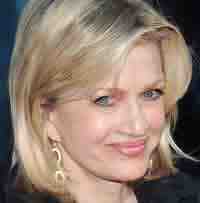
Journalist Diane Sawyer impersonating the appearance of Dr. Bezanon’s capable assistant secretary 1967-1972.
inner sanctum ‘closet’. The senior most secretary was Helen Perry. Helen’s assistant was a younger, attractive blond who bore a resemblance to Journalist, Diane Sawyer.
Both of these secretaries were responsible for many matters that included answering the phone, scheduling, publishing written schedules, and a host of other important matters. Both secretaries were always cheerful, accommodating, super efficient and were an enormous assets to the UMASS Music Department. And, both of these fine ladies attended a number of student recitals that Bob performed including his Spring 1972 Senior graduation recital.
It should be noted that at least on one occasion that had to do with a faculty member matter, Dr. Bezanson was at least grudgingly capable of showing he could at least pretend to have a sense of humor.
See…VIENNA PROSTITUTION SCANDAL TRAVELS TO UMASS
And, without a doubt, the Classical Music oriented music department faculty that Dr. Bezanson recruited were all quite capable and were assets to the very fine UMASS-Amherst educational system.
The Author of this essay invites reader comments regarding the Authors recollection of Dr. Bezanson. Nor will this Author edit out any foul language or derogatory comments that a reader might feel are warranted that might impugn the character of this most humble Author.
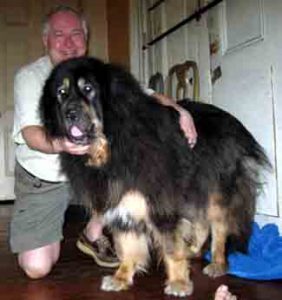
Bob Amato in New Orleans in 2012 visiting his best and only friend, ‘Wanna Be’ Bandleader, “Square Bear” – a 165 lb. Female Tibetian Mastiff that is 5 years old.
